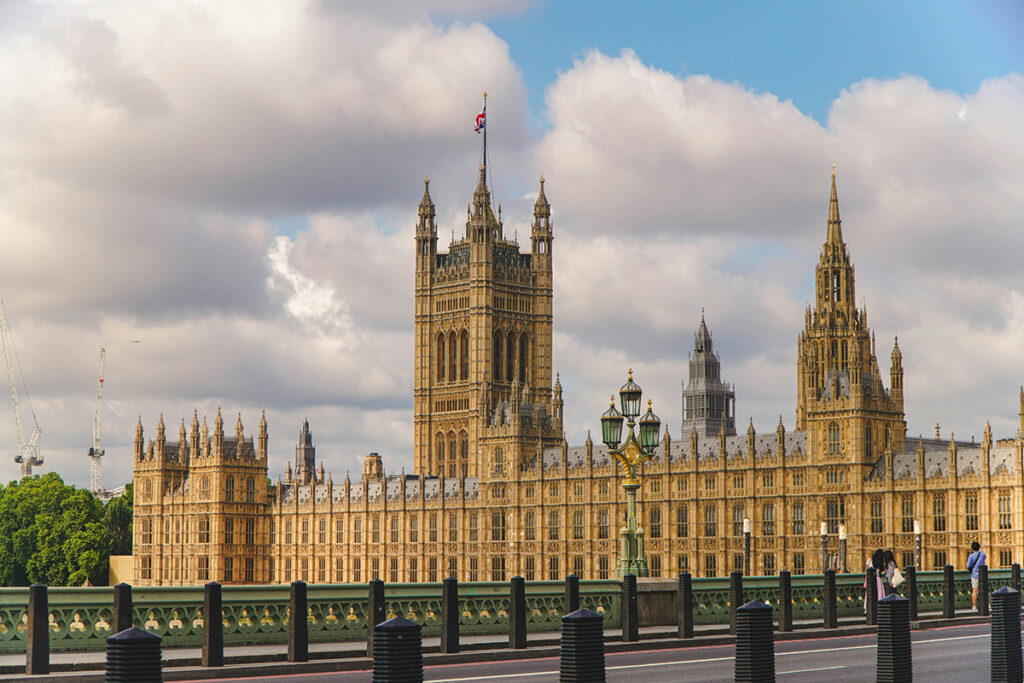Massive GDP revisions in the U.K. have changed the outlook
The U.K. was believed to be a massive underperformer in terms of the economic recovery following COVID. The latest GDP numbers showed that the U.K. economy was still slightly below 2019 levels in the second half of this year.
However, this narrative has completely changed now as the ONS recently published a special report that revised the GDP numbers for the last few years. It turns out the extremely volatile macroeconomic environment during the COVID years also increased measurement errors in official data.
The latest revisions now show that the U.K. economy is actually nearly 1.8% larger right now than we were led to believe just a few weeks ago. This means that the U.K. outperformed Germany – the sick man of Europe again – and is now on par with countries like France and Italy. Not a stellar performance by any means but much better than we thought was the case.
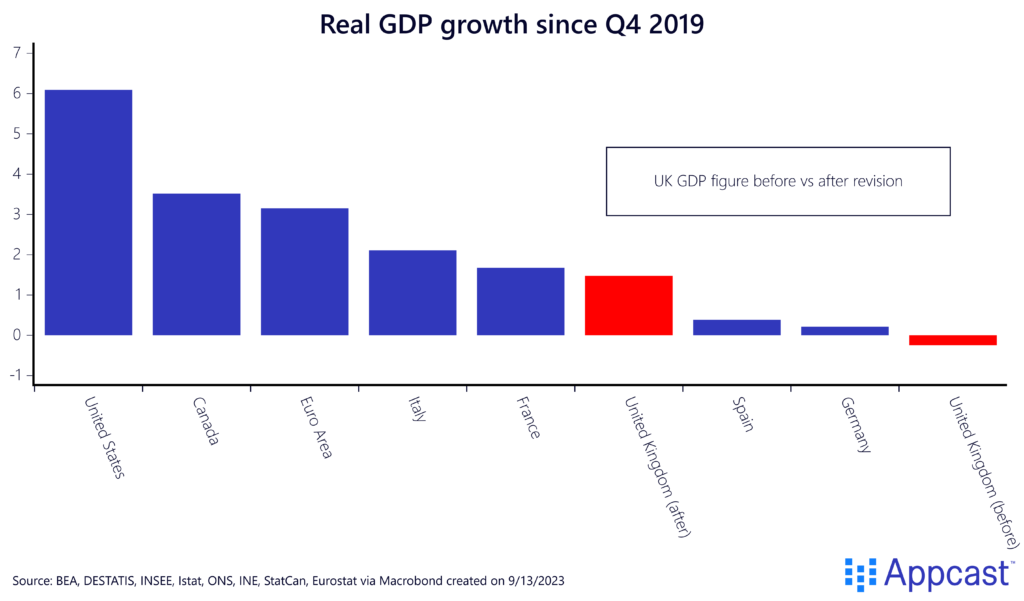
The most volatile quarters were revised
Digging deeper into the ONS report, one can see that the almost the entire upward GDP revision occurred during the two most volatile quarters of the COVID pandemic. The massive decline of more than 20% in Q2 2020 as well as the high growth in Q2 2021 of more than 7% were revised upwards by 0.7 and 0.8 percentage points, respectively.
The unprecedented situation of an economy coming to a temporary standstill followed by a massive growth made it more challenging for statisticians to accurately capture what was happening to GDP at the time.
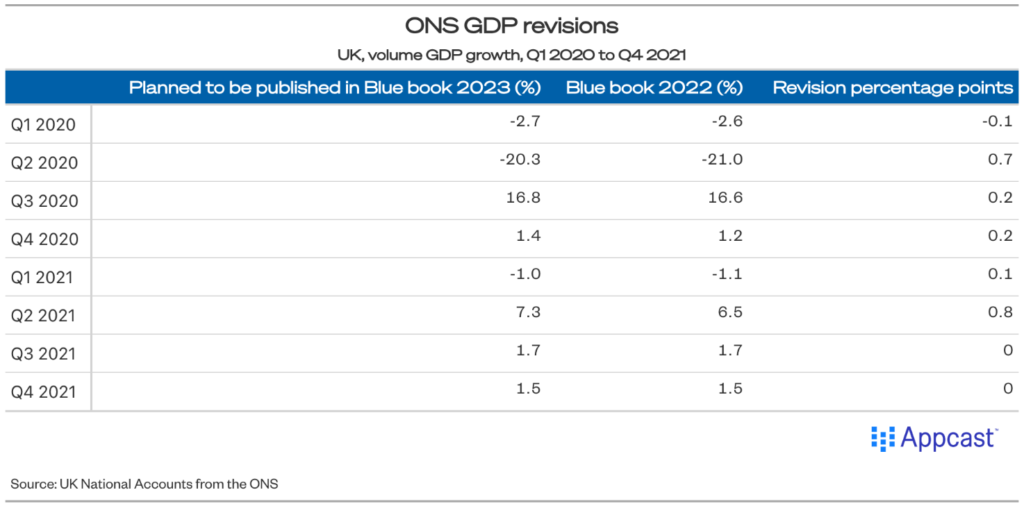
Services outperforming, construction down, manufacturing in shambles
The bright spot of the U.K. economy is the service sector. The U.K. manufacturing sector has been on a long-term secular decline for decades. The British economy has transformed into being more dependent on the service sector, with Greater London being the epicenter of that transformation. And Brexit dealt another blow to the already struggling British industrial producers, especially the car industry.
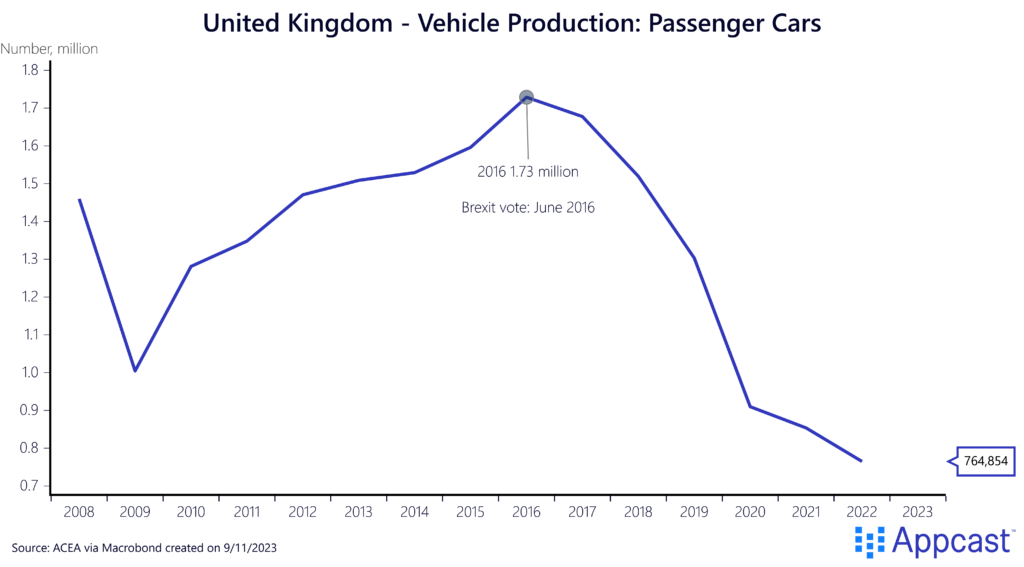
As the following table shows, manufacturing is the sector that has seen the largest downward revision of more than 12%, followed by construction with a downward revision of 2.8%. The U.K. economy grew faster than expected thanks to large upward revisions for the service sector of 3.8%. And because services are nowadays by far the largest part of GDP – more than 60% – this was enough to lift the economy’s monthly GDP series by almost a percentage point.

The output decline in production was much steeper than previously estimated in the following industries: chemicals, machinery and equipment, electrical equipment, and manufacture of basic metals and metal products.
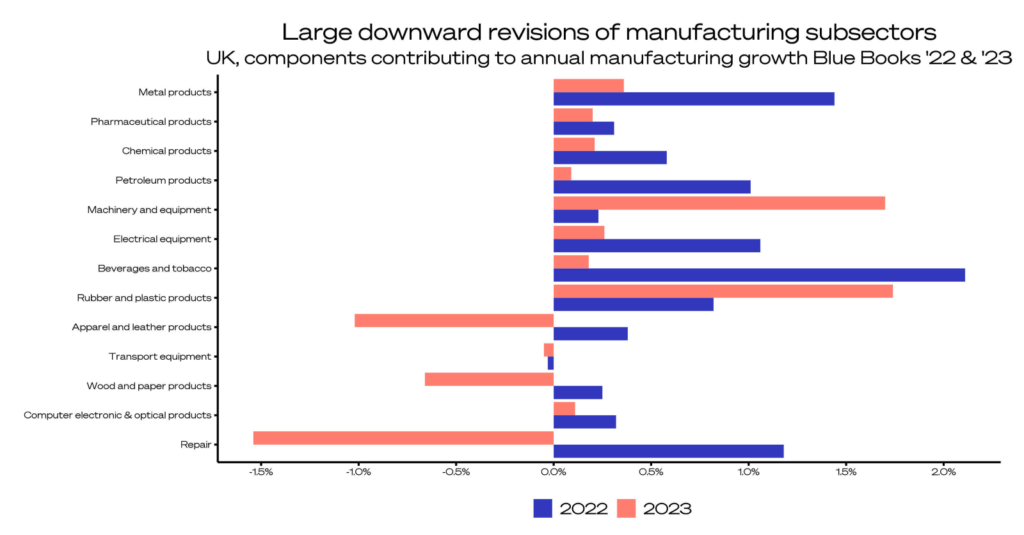
When it comes to the service sector, output increased by more than previously estimated in human health and social work, and wholesale and retail trade.
A large share of the healthcare sector as well as most of the retail trade were shutdown throughout 2020 during the initial stage of the pandemic. The intermittent lockdowns that lasted for weeks at a time were obviously affecting the service sector the most. The COVID vaccine rollout in 2021 then led to a stronger recovery in both of these sectors than previously recorded in the national GDP statistics.
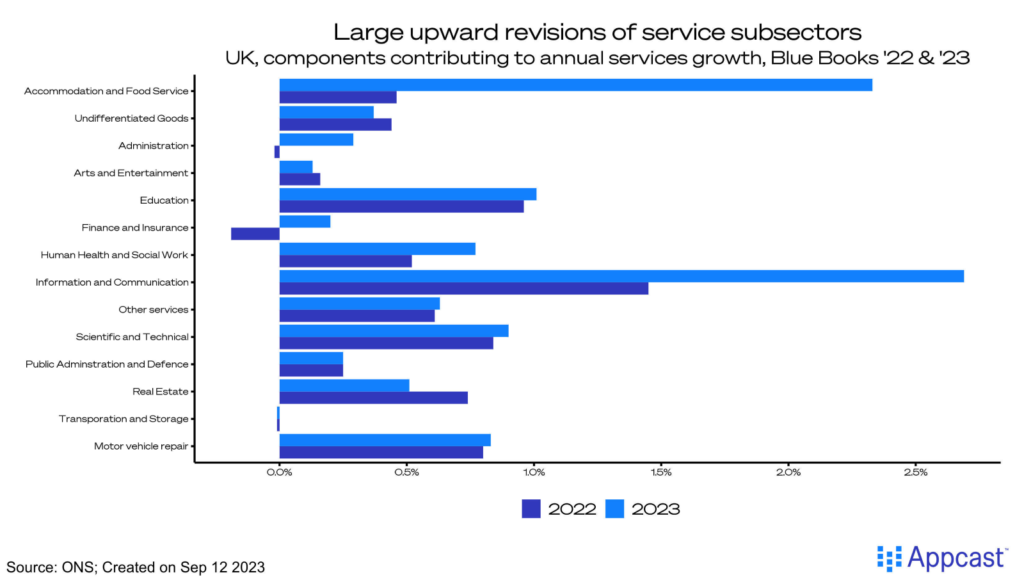
Conclusion
The ONS is one of the first national statistics offices to follow new OECD guidelines to update estimates for GDP figures with the use of so-called supply and use tables (granular output data for each industry). The updated data shows that the U.K. economy was larger than previously estimated at the end of 2021 and the GDP revision increased U.K. GDP by almost two percent.
This means, that contrary to earlier estimates, the U.K. economy is not a clear underperformer anymore since the beginning of the pandemic but has grown just as much as France and Italy (and more than Germany).
That being said, other countries still need to update their GDP estimates as well. It is conceivable that other advanced economies will also see a slight bump in their GDP data in the coming years. The U.K.’s “catch-up growth” might turn out to be temporary after all once other countries have revisited their GDP statistics for those two volatile years.


